- Home
- Loren D. Estleman
Amos Walker: The Complete Story Collection
Amos Walker: The Complete Story Collection Read online
AMOS WALKER
The Complete Story Collection
Loren D. Estleman
Published by
TYRUS BOOKS
an imprint of F+W Media, Inc.
4700 East Galbraith Road
Cincinnati, Ohio 45236
www.tyrusbooks.com
Copyright © 2010 by Loren D. Estleman
All rights reserved.
No part of this publication may be reproduced or transmitted in any form or by any means, electronic or mechanical, including photocopy, recording, or any information storage or retrieval system, without permission in writing from the publisher.
This is a work of fiction.
Any similarities to people or places, living or dead, is purely coincidental.
eISBN 10: 1-4405-3100-5
eISBN 13: 978-1-4405-3100-2
This work has been previously published in print format under the following ISBN:
978-1-935562-24-5
All stories © Loren D. Estleman
“Greektown” was first published in Alfred Hitchcock Mystery Magazine, 1983
“Robber’s Roost” was first published in Mystery Magazine, 1982
“Fast Burn” was first published in Alfred Hitchcock Mystery Magazine, 1983
“Dead Soldier” was first published in Alfred Hitchcock Mystery Magazine, 1982
“Eight Mile & Dequindre” was first published in Alfred Hitchcock Mystery Magazine, 1985
“I’m in the Book” was first published in The Mean Streets, Mysterious Press, 1986
“Bodyguards Shoot Second” was first published in A Matter of Crime, 1987
“The Prettiest Dead Girl in Detroit” was first published in The Eyes Have It, Mysterious Press, 1985
“Blond and Blue” was first published in New Black Mask, 1985
“Bloody July” was first published in New Black Mask, 1985
(The above stories were collected in General Murders, Houghton Mifflin, 1988, © Loren D. Estleman)
“The Anniversary Waltz” was first published in The Mysterious Press Anniversary, Mysterious Press, 2001
“Needle” was first published in Alfred Hitchcock Mystery Magazine, 2007
“Cigarette Stop” was first published in Justice for Hire, Mysterious Press, 1990
“Deadly Force” was first published in Ellery Queen Mystery Magazine, 1992
“People Who Kill” was first published in People Who Kill, Pulphouse, 1986
“Pickups and Shotguns” was first published in Homicide Host Presents, Write Way, 1996
“The Crooked Way” was first published in A Matter of Crime, Harcourt Brace Jovanovich, 1988
“Redneck” (as “Double Whammy”) was first published in Mary Higgins Clark Mystery Magazine, 1998
“Dogs” was first published in Alfred Hitchcock Mystery Magazine, 1987
“Safe House” was first published in Deadly Allies, Doubleday, 1992
“Kill the Cat” was first published in Detroit Noir, Akashic Books, 2007
“Slipstream” was first published in Deadly Allies II, Doubleday, 1994
“Lady on Ice” was first published in A Dark and Sultry Night for Crime, Berkley, 2003
“Snow Angels” was first published in Invitation to Murder, Dark Harvest, 1991
“Major Crimes” was first published in Alfred Hitchcock Mystery Magazine, 1986
“Square One” was first published in Alfred Hitchcock Mystery Magazine, 2006
“The Man Who Loved Noir” was first published in Alfred Hitchcock Mystery Magazine, 1991
“Sunday” was first published in For Crime Out Loud, Durkin Hayes Audio, 1995
“Necessary Evil” was first published in The Shamus Game, Signet, 2000
“Trust Me” was first published in Alfred Hitchcock Mystery Magazine, 2006
“The Woodward Plan” was first published in Mystery Street, Signet, 1993
“Rumble Strip” was first published in Alfred Hitchcock Mystery Magazine, 2009
“Sometimes a Hyena” © 2010
Contents
INTRODUCTION: Amos and Me
Greektown
Robbers’ Roost
Fast Burn
Dead Soldier
Eight Mile & Dequindre
I’m In the Book
Bodyguards Shoot Second
The Prettiest Dead Girl in Detroit
Blond and Blue
Bloody July
The Anniversary Waltz
Needle
Cigarette Stop
Deadly Force
People Who Kill
Pickups and Shotguns
The Crooked Way
Redneck
Dogs
Safe House
Kill the Cat
Slipstream
Lady On Ice
Snow Angels
Major Crimes
Square One
The Man Who Loved Noir
Sunday
Necessary Evil
Trust Me
The Woodward Plan
Rumble Strip
Sometimes a Hyena
FWCRIME.com
Amos and Me
I hesitated over that title. The machinery falters whenever I refer to him as Amos. After thirty years we’re still not on a first-name basis.
To get close is to intrude. Yes, he tells his stories in first person, probably over a glass of cheap scotch with some new injury keeping pace with the beating of his heart; but he draws the shade just short of the reveal, preferring to test his theory in practice. As he says somewhere, “I hate being wrong in front of witnesses.”
I doubt I could describe Walker physically in the amount of detail you’d need to pick him out of a crowd, although I’d know him at a hundred paces. I never took the time to provide more than a few Impressionistic strokes to keep the reader from supplying his own image. Since Walker’s the one telling the story, it’s unlikely he’ll be confused with any other characters. I bring this up to warn other writers away from describing their protagonists in mirrors, which apart from being a clanking cliché just slows down the action.
But others have written at length about Walker, flaying him open like a medical cadaver and weighing his brain, which lists heavily toward the centers of irony. I’ve held the scalpel a number of times myself, but the more I do that the more I watch myself work later, being careful to make Walker behave as represented instead of letting him go about his business with me stumbling along behind, the way I’ve done from the beginning. I’d rather write him than write about him. It’s his longevity I want to discuss.
When Motor City Blue appeared in 1980, there was no Internet. There were no cell phones, no cordless phones of any kind. There was only one telephone company. The broadcast networks ruled television. Pee Wee Herman was a major star. Videocassette recorders were new on the market, priced far outside the budgets of most Americans: If you missed a movie on its first release, you waited ten years for it to appear on TV, edited to pablum to avoid violating FCC regulations and cut up to sell beer and automobiles, and if two programs you wanted to see aired in the same time slot, you had to pick one and wait for the summer rerun season to see the other instead of recording one to watch at your own convenience. (Reality shows would not crowd out repeat broadcasting for another twenty years.) The Berlin Wall was observing its twentieth anniversary. The USSR had just begun the invasion of Afghanistan that would bring the Soviet empire down in ruins by the end of the decade. DNA was a mystery waiting to be unlocked.
It’s a different world, to be sure, but in many ways little has changed. There is fighting again in Afghanistan, but the USA is leading it
, and finding the place as difficult to bring to heel as the Russians did. Iran is still a threat, and peace in the Middle East remains as elusive as when Lawrence of Arabia was campaigning in Egypt. And Amos Walker is still sitting in his third-floor walk-up office on Grand River Avenue in Detroit, contributing to the nicotine smudge on the ceiling above his desk when he isn’t out exposing the back of his head to some handy bludgeon on some troublesome errand.
Private eye fiction—a mainstay of the American mystery since 1920—was all but dead when I wrote Motor City Blue. Ross Macdonald was ailing and would write no more Lew Archers. Mickey Spillane was doing commercials for Michelob. Arthur Lyons and Robert B. Parker were just getting started and were flying well below the radar. The entire suspense genre was considered to be in decline, held above water only by the espionage thrillers of Robert Ludlum and Ken Follett. Romance novels were nudging everything else off the racks. It’s hard to imagine a more inopportune moment to begin a series about a postmodern knight errant slaying his ogres one at a time armed with nothing but a revolver and a laminated license. But I was stubborn; which as we’ll see has always been my most reliable weapon of small destruction. I’d written westerns, I’d leapt aboard the bandwagon of Sherlock Holmes pastiches that proliferated after the success of Nicholas Meyer’s The Seven-Percent Solution. I needed a break from horses and gaslight.
I was warned against it. What I’d considered my greatest asset, the Detroit setting so rarely used in detective stories, yet so eminently adapted to that seamy world, was the very reason, fellow Detroiters assured me, that the book would never find an audience. Mayor Coleman A. Young was six years into his rape of the city; it would continue for another fourteen, and sixteen years after it ended, Detroit shows no sign of recovering. The national media took sadistic glee in exposing its blasted neighborhoods, its soaring murder rate, its Devil’s Night arsons, and the administration and the three local television stations concentrated on polishing the city’s image instead of acknowledging the source of all the bad publicity and taking the measures necessary to eliminate it. But to mangle a notorious aphorism uttered by a top General Motors executive, what’s bad for a city is good for a crime novel. Where others saw desolation and despair, I saw color. It’s the worm in the apple that makes the apple interesting. I wrote:
Dry, grainy snow—the kind that usually falls in the city— heaped the sills of unused doorways and lined the gutters in narrow ribbons, where the wind caught and swept it winding like white snakes across the pavement, picking up crumples of muddy newspaper and old election campaign leaflets and empty condom wrappers and broken Styrofoam cups as it went, rattling them against the pitted sides of abandoned cars shunted up to the curb; weathering the corners off ancient buildings with bright-colored signs advertising various hetero- and homosexual entertainments; banging loose boards nailed over the windows of gutted stores defiled with skulls and crossbones and spray-painted graffiti identifying them as street-gang hangouts, Keep Out; buckling a billboard atop a brown-stone two blocks south upon which a gaggle of grinning citizens gathered at the base of the Renaissance Center, near where its first suicide landed, urged me in letters a foot high to Take Another Look at Detroit...
The book was rejected twice, first by my editor at Doubleday, who wanted me to write another novel set in Victorian London, the second time by another publisher who said it wouldn’t stand a chance in the marketplace. But my agent, Ray Puechner, was relentless, and placed it with Ruth Hapgood at Houghton Mifflin, who would go on to edit the next nine books in the series. Two of those titles would be named Notable Books of the Year by the New York Times, and the fifth, Sugartown, would win the first of four Shamus Awards given by the Private Eye Writers of America to the series. The books were picked up in the United Kingdom and Australia and translated into French, Italian, Spanish, German, Danish, and Japanese. As of this writing, twenty Amos Walker novels have been published, with a twenty-first awaiting its time in stores and libraries.
It’s not quite a rags-to-riches story; more of a rags-to middle-class respectability. Amos Walker has never cracked a national bestseller list, but he’s survived a number of fictional detectives who have. The series has been with four publishers, not counting mass-market and trade-paper reprints, and for seven years I was enjoined from writing about Walker in a book because of a dispute over contracts. However, the fact that readers embraced the character all over again after so long a silence testifies to his durability.
Here again is where my congenital muleheadedness paid off. When asked the reason for Walker’s long tenure, my reply is always “applied denial.” Publishing wisdom says that there is no percentage in picking up a series after it’s been dropped by a competitor, but I’ve never been one to let someone else’s wisdom stand in my way. After Houghton Mifflin bowed out of an auction, and after I canceled a contract with the high bidder over professional differences, I took the series to the Mysterious Press, where an editor I’d known for years was eager to show what he could do with it. When, four books later, that editor was terminated in the ill-fated AOL/Time-Warner merger, I offered the series to Forge, which had been publishing my historical westerns for years, and there the novels have remained to this day. On occasion, these changes of venue have involved smaller cash advances, but never so small as to be unworthy of my best efforts, and in the long run the books have earned as much if not more through royalties. I need money to live, and I enjoy spending it when there’s anything left over after my belly is full and my mortgage is paid, but I’ve never considered it an indicator of my value as a human being or as an artist. I don’t keep score with figures involving dollar signs.
So much for the novels—although I hope there is a great deal more to be heard from and about them. The present collection contains more than thirty short stories featuring Walker beginning in 1982. Walker connoisseurs, assuming such creatures exist, may note that the stories place less emphasis on photorealistic style and more on leanness of prose. It’s an often-repeated misconception that not a single word can be excised from the Estleman canon; going back over my earlier work, I always find bales of stuff I could do without. I’m one of those critics I hate.
Economy is crucial to the short form, but when you pare a thing too close to the bone you risk nicking the marrow. It’s not enough to say the air is cold and leave it at that. If you want the reader to feel the cold, you need to lay a piece of metal alongside his spine; only you can’t do that, and I can’t either, because I already have. If I repeat the image, the reader will remember it from before and wind up thinking about that instead of how cold it is. In a novel, I can spend a paragraph comparing ice floes to tipped-over tombstones, frosting noses with tiny needles, and bursting the cores of trees; but this isn’t a novel, it’s piston-driven, I’m being paid by the word; okay, you made your point, it’s cold. What happens next?
A novel is a broad canvas. You can hide coarse brushstrokes in the expanse. Short stories are miniatures, where flaws of any sort are immediately obvious. A Botticelli would never have attempted one. There are highly accomplished novelists who blanch at the prospect of writing short fiction. William Faulkner once said that he’d tried poetry, couldn’t do it, then tried short stories, couldn’t do that, and so he wrote novels. More prosaic writers have compared writing short stories to making love on an elevator and having to finish before it reaches the top floor. They’re an intolerant form. When I type the last period on a short story I consider satisfactory, I feel a sense of accomplishment (and exhaustion) that I don’t necessarily feel at the end of a novel that took me six months to complete.
The stories in this book satisfied me, when I wrote them. Looking back from the perspective of years or even weeks, I can always see something else to be done, but if in the rereading I wasn’t sufficiently happy with the result, I wouldn’t be offering it here. This is the humblest way I can think of to say these are good stories. Walker himself owes them a personal debt: They kept him alive when I was prohibite
d from writing about him at book length.
These stories originally appeared in Ellery Queen’s Mystery Magazine, Alfred Hitchcock’s Mystery Magazine, and various other magazines and anthologies. They’re arranged in rough chronological order for those who care to track Walker’s progress through time beginning with “Robbers’ Roost” in 1982, two years after his debut in Motor City Blue. Amateur anthropologists of this stamp might discover a somewhat sadder and wiser detective in “Rumble Strip” than the one they made the acquaintance of in “Greektown.”
Or perhaps not; but I’m a somewhat sadder and wiser man myself than I was when the only place you could look up a telephone number was in the Yellow Pages. I have to believe that some of life’s lessons have spilled out into print.
As I said, the outlook for private eye fiction in 1980 was dismal. Within two years, other series had sprung up against the backdrop of every major city in the U.S. A national organization of private detective writers was chartered, with applications for membership streaming in from as far away as Australia. I can’t claim credit for this renaissance, because others were developing their characters at the same time. But I can state that most of those writers have moved on to other subjects and that some have left the trade entirely. Meanwhile, Amos Walker and I remain. I have, of course, many readers to thank, as well as editors Ruth Hapgood, Cathleen Jordan, Janet Hutchings, Bill Malloy, Jim Frenkel, and Linda Landrigan, as well as the staff responsible for the present book, and agents Ray Puechner, Barb Puechner, Millie Puechner, Robin Rue, and Dominick Abel. Finally, I can’t emphasize too strongly the importance of the City of Detroit to the series, and the courageous people who maintain the place with little help from the people in office.
—LOREN D. ESTLEMAN
January 2010
Greektown
One
The restaurant was damp and dim and showed every indication of having been hollowed out of a massive stump, with floorboards scoured as white as wood grubs and tall booths separated from the stools at the counter by an aisle just wide enough for skinny waitresses like you never see in Greektown. It was Greektown, and the only waitress in sight looked like a garage door in a uniform. She caught me checking out the booths and trundled my way, turning stools with her left hip as she came.

 When Old Midnight Comes Along
When Old Midnight Comes Along The Confessions of Al Capone
The Confessions of Al Capone The Wolfer
The Wolfer Thunder City
Thunder City Loren D. Estleman - Valentino 01 - Frames
Loren D. Estleman - Valentino 01 - Frames Stamping Ground
Stamping Ground Midnight Man
Midnight Man Little Black Dress (Peter Macklin Novels)
Little Black Dress (Peter Macklin Novels) Loren D. Estleman - Amos Walker 16 - Poison Blonde
Loren D. Estleman - Amos Walker 16 - Poison Blonde Brazen
Brazen Mr. St. John
Mr. St. John Don't Look for Me: An Amos Walker Novel (Amos Walker Novels)
Don't Look for Me: An Amos Walker Novel (Amos Walker Novels) Stress
Stress Sugartown
Sugartown Loren D. Estleman - Valentino 02 - Alone
Loren D. Estleman - Valentino 02 - Alone Sweet Women Lie
Sweet Women Lie MOTOR CITY BLUE
MOTOR CITY BLUE The Perils of Sherlock Holmes
The Perils of Sherlock Holmes Peeper
Peeper Silent Thunder
Silent Thunder Port Hazard
Port Hazard A Smile on the Face of the Tiger
A Smile on the Face of the Tiger Never Street
Never Street Loren D. Estleman - Valentino 03 - Alive!
Loren D. Estleman - Valentino 03 - Alive! Valentino: Film Detective
Valentino: Film Detective Burning Midnight
Burning Midnight Frames
Frames This Old Bill
This Old Bill You Know Who Killed Me
You Know Who Killed Me Ragtime Cowboys
Ragtime Cowboys Edsel
Edsel Book Club
Book Club Alive!
Alive! Whiskey River
Whiskey River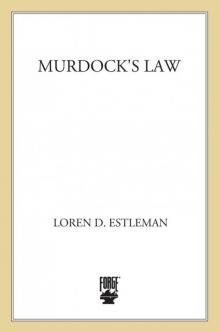 The Murdock's Law
The Murdock's Law Bloody Season
Bloody Season The Book of Murdock
The Book of Murdock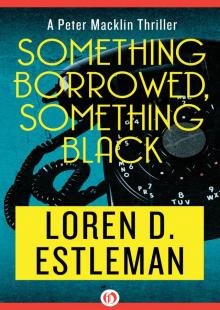 Something Borrowed, Something Black
Something Borrowed, Something Black The High Rocks
The High Rocks The Ballad of Black Bart
The Ballad of Black Bart The Adventure of the Plated Spoon and Other Tales of Sherlock Holmes
The Adventure of the Plated Spoon and Other Tales of Sherlock Holmes The Adventures of Johnny Vermillion
The Adventures of Johnny Vermillion Wild Justice
Wild Justice The Lioness Is the Hunter
The Lioness Is the Hunter Sugartown: An Amos Walker Mystery (Book Five)
Sugartown: An Amos Walker Mystery (Book Five) Cape Hell
Cape Hell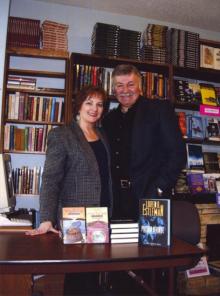 Downriver
Downriver Loren D. Estleman - Amos Walker 17 - Retro
Loren D. Estleman - Amos Walker 17 - Retro Detroit Is Our Beat
Detroit Is Our Beat Jitterbug
Jitterbug The Sundown Speech
The Sundown Speech Loren D. Estleman - Amos Walker 21 - Infernal Angels
Loren D. Estleman - Amos Walker 21 - Infernal Angels Kill Zone
Kill Zone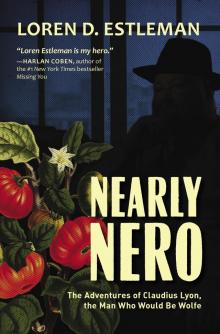 Nearly Nero
Nearly Nero Red Highway
Red Highway American Detective: An Amos Walker Novel
American Detective: An Amos Walker Novel Sudden Country
Sudden Country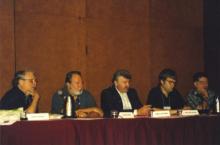 King of the Corner
King of the Corner Evil Grows & Other Thrilling Tales
Evil Grows & Other Thrilling Tales Aces & Eights
Aces & Eights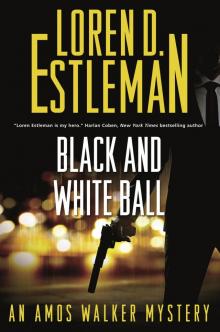 Black and White Ball
Black and White Ball The Hider
The Hider Alone
Alone Amos Walker: The Complete Story Collection
Amos Walker: The Complete Story Collection Any Man's Death
Any Man's Death The Long High Noon
The Long High Noon The Witchfinder
The Witchfinder Sinister Heights
Sinister Heights City of Widows
City of Widows Roses Are Dead
Roses Are Dead Loren D. Estleman - Amos Walker 18 - Nicotine Kiss
Loren D. Estleman - Amos Walker 18 - Nicotine Kiss